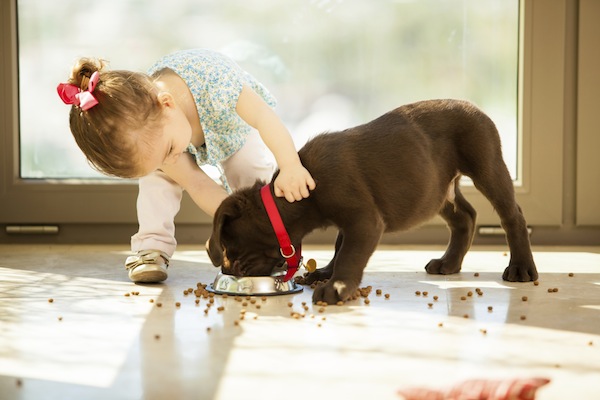
When I found myself on the street wailing at my puppy as she lunged at passersby in order to greet them and adore them, “but you don’t even know those people!”, I knew it was time to get help.
I have taught for over twenty years. I’ve taught at university, college, and high-school level. I know a thing or two about teaching. But confronted with a six month old, curly haired, black as soot standard poodle, I was a wreck. So I called up a dog trainer to save me.
I was amazed that everything I learned applies in powerful ways to teaching.
The reason we got “Duchess” in the first place was because our fifteen year old suffers from serious health issues, but even more challenging this year, he needed to undergo two corrective surgeries on his legs. He is in a great deal of pain on a daily basis and it cannot be managed because his health issues stop him from being able to take any kind of effective painkiller.
Every morning, Duchess hurtles into his room, stands on her hind legs and leans as far as she can onto his bed shaking with happiness and wriggling with delight. Her whole body hums with the joy of seeing him wakeup. During those brief moments, I know getting a puppy was the right thing to do, but then as the day unfolds I forget as she whips things off the counter, lunges at people, pulls my arm out of its socket on paths if she sees a bird, barks relentlessly if she isn’t getting her way or wants attention.
And I talk to her. I really do. I tell her “No” and “Stop” and “Sshhh”. In fact, these are things I say to students too and what I learned from the dog trainer is that I’m wasting my breath. Puppies, like kids, are ruled by instinct. So the first rule is: encourage them to do what you want in such a way that it is makes bypassing instinct worthwhile.
If a person is there that Duchess wants to jump all over, I now meet her eyes and get her attention. Just like the dog trainer taught me, I put a treat in my hand and hold it in front of her nose while we walk calmly past the person. Then after we’ve gotten past, I let her have the treat. As the dog walker said, she is much more scent oriented than sound. So for me to “talk” at her, just sounds like “blah blah blah.” There are definitely days in the classroom when I know that’s what my students hear. Those are the times to shift it up. Appeal to their desire to move. Send them up to the board to write or to the window to look or down the hall to energize them. Instead of insisting teens be quiet or put their phones away, let them talk, let them use their phones for accessing information. Work with their impulse rather than curb it.
Another key lesson I learned: if you tell a puppy “stop” or “leave it”, they’re keen to please, but then they need direction so you have to follow it with “forward.” Same with kids I realized. It’s one thing to give a negative command, but the goal is to switch it instantly into a positive. “Be quiet” or “ssshhh” needs to be followed with “let’s get your work done so you don’t have homework!”
The dog trainer said that puppies respond much more to hand signals and body movement. They are what we call kinesthetic learners in the classroom. All the endless speaking at them falls on deaf ears, but use your hands and they tune right in. Our older son, who is away at university, is an amazing kinesthetic learner. He can watch an athlete do a particular movement on Youtube just once and recreate it himself without thinking. It’s vital for us as teachers to remember to differentiate our teaching so that the textual learner sees the words, the auditory learner hears them, and the kinesthetic learner matches the physicality of our movements to the information being presented.
The most important lesson I learned from the dog trainer was that my energy impacts Duchess. She said dogs mirror their owners. If you’re aggressive, your dog will be too. If you’re someone always praising them in a high-pitched voice, they’ll become immune to striving for proper conduct as everything they do is praised. How similar puppies are to kids.
Duchess was picking up on my anxiety. I’m worried that she’ll bark and bother our neighbours. I’m worried that she’ll lunge at someone and scare them. And deep down, as dogs can sense, I’m worried about my son and the pain he’s in and the pending surgery. So the dog trainer said to let go of it. Shoulders back, deep breath, make being out for a walk a relaxing interlude and with a few small lessons and practice I’ve done just that. Letting go of anxiety makes me a better dog owner and a better teacher.



























